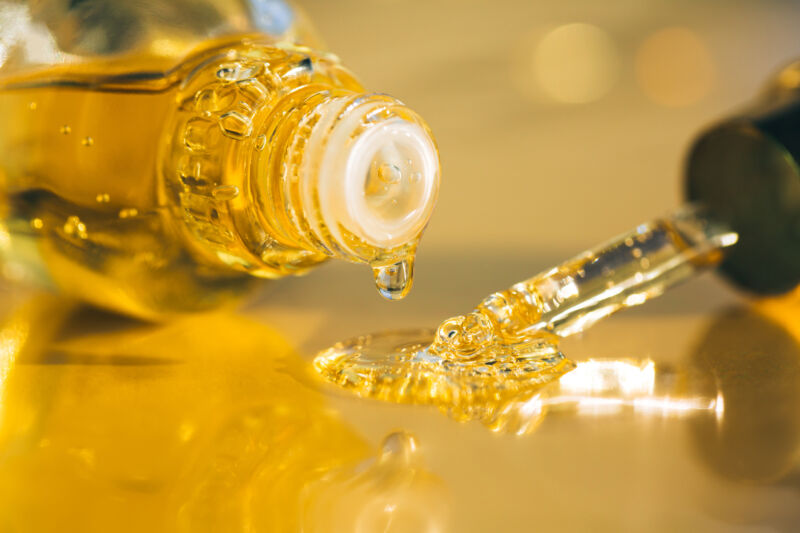
Over the course of the COVID-19 pandemic, researchers have tested a wide range of drugs to see if they inhibit the virus. Most of these tests didn’t end up going anywhere; even the few drugs that did work typically required concentrations that would be impossible to achieve inside human cells. And a few (looking at you, ivermectin and chloroquine) took off with the public despite iffy evidence for effectiveness, seemingly causing nearly as many problems as they would have solved if they actually worked.
Nevertheless, two years on, word of yet another one of these drug experiments caused a bit of a stir, as the drug in question was a cannabinoid. Now, the full data has gone through peer review, and it looks better than you might expect. But the number of caveats is pretty staggering: the effect is small, it hasn’t been tested in patients, the quality assurance of commercial cannabidiol (CBD) products is nearly nonexistent, and—probably most importantly—another cannabinoid blocks the effect entirely.
With that out of the way, on to the data.
Why test cannabinoids?
One of the big focuses of the drug testing was to look for chemicals that were already approved for use in humans, which would simplify their use as treatments for a separate disorder since all the safety data should be available already. And CBD is approved for use in people with seizure disorders, although the biochemical basis of its effectiveness is unclear.
In any case, the researchers behind the new work (primarily at the University of Chicago) started with lung cancer cells that produce the protein that SARS-CoV-2 uses to infect cells and dumped both the virus and CBD on the cells. And it worked. At non-toxic doses, the reproduction of the virus was strongly inhibited by CBD. The team went on to confirm the result in other lung cell lines. They also demonstrated that a partly metabolized derivative had a similar effect, but a range of additional cannabinoids did not.
And this is where we get to one of the downsides. THC, the most potent mind-altering substance in cannabis, did not have an effect on its own. But when given at the same time as CBD, it reversed CBD’s inhibition of viral growth. So simply trying to use cannabis for viral protection will fail pretty miserably.
In any case, this is where the work starts to move beyond the hundreds of similar “let’s throw drugs on some cells” studies that have been done: the researchers do their best to figure out how CBD works. They checked whether it stopped human cells from producing the protein that the virus latches onto when infecting them, but that wasn’t the cause. And they confirmed that viruses could still get inside cells by using the SARS-CoV-2 spike protein.
But once the virus gets inside, not a lot seems to happen. Very little of the spike protein gets made in infected cells treated with CBD, and levels stay low for up to 15 hours after infection.